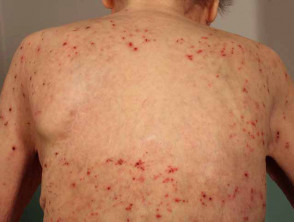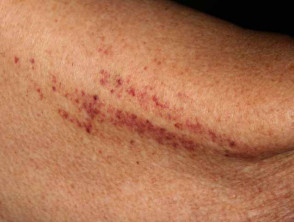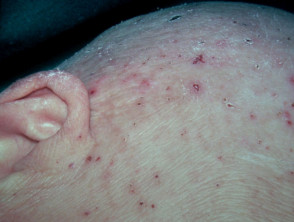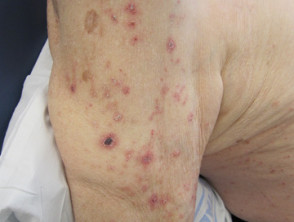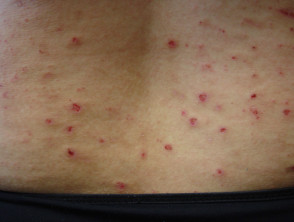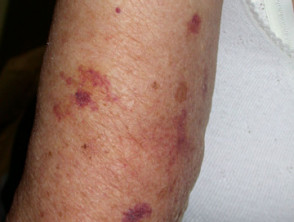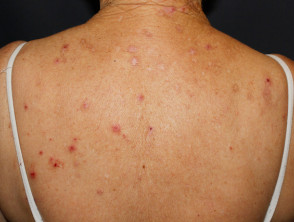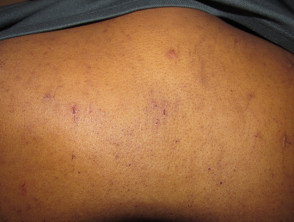What is paraneoplastic pruritus?
Pruritus, or itch, is a sensation that induces the desire to scratch. Paraneoplastic pruritus is where itching occurs in association with malignancy (cancer). The mechanisms in paraneoplastic pruritus are complex and are not fully understood.
What are the features of paraneoplastic pruritus?
Itching in paraneoplastic pruritus is usually generalised without any obvious rash.
The severity of the itch can be mild to unbearable, and it does not always correlate with the extent of underlying cancer. It may precede other symptoms of malignancy by up to several years.
As paraneoplastic pruritus leads to scratching, secondary skin changes may result, such as excoriation, bruising, pigmentary changes and scarring. These tend to be absent in areas that the patient can't reach, such as the mid-upper back.
Generalised pruritus: excoriations, bruises and scars
What kinds of cancer are associated with paraneoplastic pruritus?
Several types of cancer have been reported to induce pruritus as a paraneoplastic phenomenon, particularly lymphoma (especially Hodgkin lymphoma) and leukaemia.
It has also been reported less commonly with various solid organ tumours, including:
- Lung tumours
- Gastric tumours
- Laryngeal tumours
- Insulinoma
How is paraneoplastic pruritus diagnosed?
Paraneoplastic pruritus may be suspected in a patient who presents with a new itch or itchy skin disease because the patient is known to have a malignancy. But when the patient is not known to have a malignancy, it may be suspected in those with chronic pruritus of unknown origin if they have significant features on taking a history and from findings on complete physical examination.
Laboratory investigations depend on the findings from history and examination and may include:
- Blood tests: full blood count, lactate dehydrogenase, liver function tests, immunoglobulins, serum electrophoresis
- Bone marrow examination
- Urine tests: blood, protein and immunoglobulins
- Imaging: chest x-ray, CT scan, MRI, ultrasound
- A skin biopsy or lymph node biopsy.
What treatment is available for paraneoplastic pruritus?
Paraneoplastic pruritus may resolve when the underlying malignancy is successfully treated. However, this is not always the case and the itch may become difficult to manage. Simple measures that can be helpful include keeping a cool environment, wearing loose-fitting clothing, and addressing dry skin with applications of emollients.
Medical treatments for symptomatic control that have been trialled with some success include:
- Antidepressants: selective serotonin reuptake inhibitors (SSRIs), selective norepinephrine reuptake inhibitors (SNRIs), or tricyclic antidepressants (TCA) such as amitryptiline
- Neuroleptics, such as gabapentin
- Antihistamines
- Mu-opioid receptor antagonists, such as naltrexone
- Topical or systemic corticosteroids
- Thalidomide
- Aprepitant (a medication to prevent nausea and vomiting)
- Phototherapy (ultraviolet (UV) therapy).
